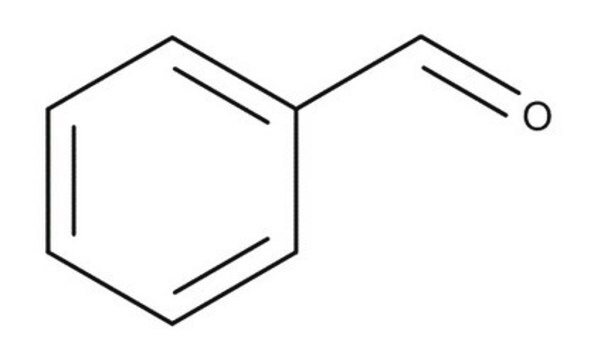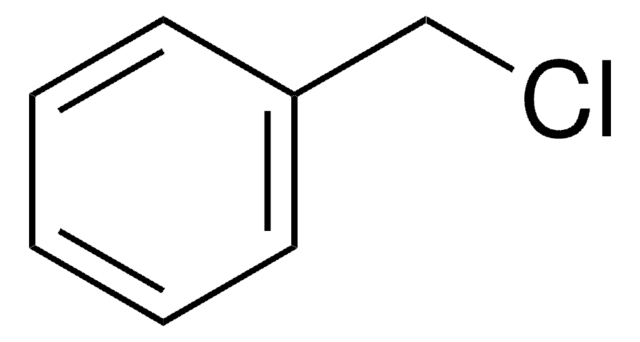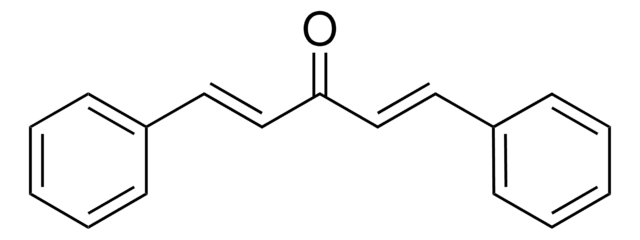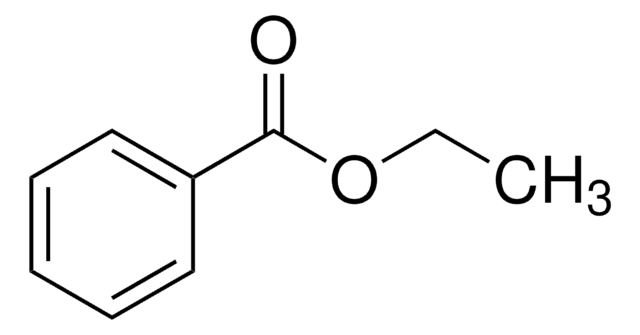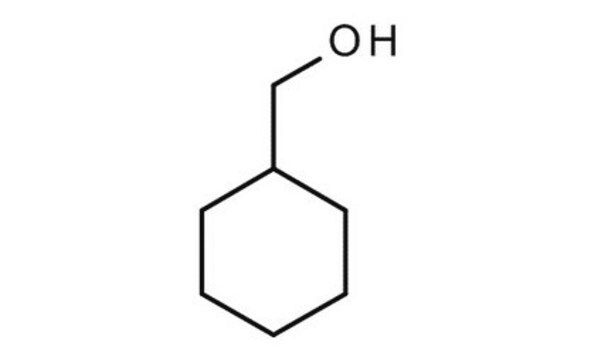09143
Benzaldehyd
analytical standard
Synonym(e):
Bittermandel
About This Item
Empfohlene Produkte
Qualität
analytical standard
Qualitätsniveau
Dampfdichte
3.7 (vs air)
Dampfdruck
4 mmHg ( 45 °C)
Assay
≥99.5% (GC)
Form
liquid
Selbstzündungstemp.
374 °F
Haltbarkeit
limited shelf life, expiry date on the label
Expl.-Gr.
1.4 %, 20 °F
Methode(n)
HPLC: suitable
gas chromatography (GC): suitable
Brechungsindex
n20/D 1.545 (lit.)
n20/D 1.546
bp
178-179 °C (lit.)
mp (Schmelzpunkt)
−26 °C (lit.)
Dichte
1.044 g/cm3 at 20 °C (lit.)
Anwendung(en)
cleaning products
cosmetics
environmental
flavors and fragrances
food and beverages
personal care
Format
neat
SMILES String
O=Cc1ccccc1
InChI
1S/C7H6O/c8-6-7-4-2-1-3-5-7/h1-6H
InChIKey
HUMNYLRZRPPJDN-UHFFFAOYSA-N
Suchen Sie nach ähnlichen Produkten? Aufrufen Leitfaden zum Produktvergleich
Allgemeine Beschreibung
Alle verfügbaren Referenzmaterialien für die in 10/2011 aufgeführten Substanzen finden Sie hier
Anwendung
Signalwort
Danger
Gefahreneinstufungen
Acute Tox. 4 Inhalation - Acute Tox. 4 Oral - Aquatic Chronic 2 - Eye Irrit. 2 - Repr. 1B - Skin Irrit. 2 - STOT SE 3
Zielorgane
Respiratory system
Lagerklassenschlüssel
6.1C - Combustible acute toxic Cat.3 / toxic compounds or compounds which causing chronic effects
WGK
WGK 1
Flammpunkt (°F)
145.4 °F - closed cup
Flammpunkt (°C)
63 °C - closed cup
Persönliche Schutzausrüstung
Eyeshields, Faceshields, Gloves, type ABEK (EN14387) respirator filter
Hier finden Sie alle aktuellen Versionen:
Besitzen Sie dieses Produkt bereits?
In der Dokumentenbibliothek finden Sie die Dokumentation zu den Produkten, die Sie kürzlich erworben haben.
Kunden haben sich ebenfalls angesehen
Protokolle
-Tolualdehyde; Valeraldehyde; Isovaleraldehyde
Unser Team von Wissenschaftlern verfügt über Erfahrung in allen Forschungsbereichen einschließlich Life Science, Materialwissenschaften, chemischer Synthese, Chromatographie, Analytik und vielen mehr..
Setzen Sie sich mit dem technischen Dienst in Verbindung.
